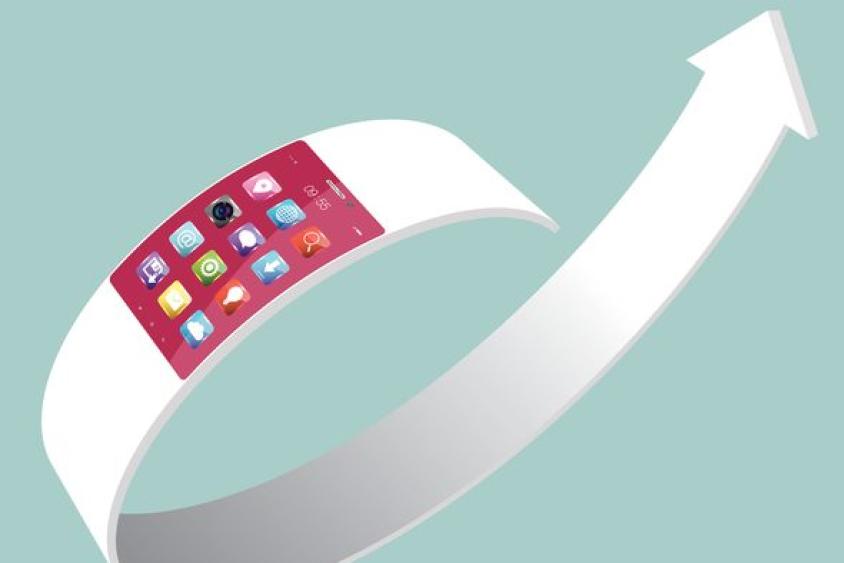How Patient Monitoring Is Poised to Revolutionize Healthcare

Over the past few years, it’s become a business truism that “every company is a data company.” We’ve seen the use of data analytics help business and IT leaders to arrive at new insights and create efficiencies in fields like finance, manufacturing, and agriculture.
Healthcare is no exception to this trend, but there are a few unique challenges in the field. For one, healthcare providers have historically only been able to gather health metrics when patients are physically in their offices. Then, even as wearable wellness devices or trackers emerged, the healthcare system initially lacked the necessary mechanisms for clinicians to make use of the data. Most providers had no way of collecting and sorting through patient information from wearable devices and no way of billing for the service.
In many ways, health monitoring outside of clinical settings is still an emerging field. But the Covid-19 pandemic accelerated the awareness of the need for, and in some cases the adoption of, health trackers and helped both patients and providers to see the potential of the technology. Here are five benefits that remote patient monitoring will unleash in healthcare:
- “Real-Life” Data – Taking measurements exclusively in a clinical setting provides a useful but very limited view of the patient. It may actually skew the interpretation of the data and the state of health of the patient, as well. The most famous example of this is the “white coat syndrome (or white coat hypertension)” that many people experience during routine check-ups when the heightened stress of being in a doctor’s office temporarily elevates their blood pressure. Additionally, remote monitoring results in benchmarking data that offers clinicians a baseline for the individual, in the context of daily living, with which to compare new information. Looking at two different patients, the same reading on an ECG might be alarming for one and fine for the other – depending on what a “normal” reading looks like for each patient. In personalized medicine, the individual is compared to themselves, over time, and not only to the average of all humans.
- Reduced Noise – When clinicians are only able to obtain patient data at in-office visits, the information they collect is especially prone to “noise” – a term used by data scientists to describe essentially meaningless information that masks the true “signal” in the data. For instance, imagine a patient who goes to the doctor every summer for his annual physical. The patient needs to come in for another reason during the winter, and the scale shows that his weight has increased by 6 percent in just a few months. That could signal the start of an alarming trend, or it might merely reflect the patient’s typical seasonal pattern of gaining and then losing the same few pounds. Data from smart scales in patients’ homes can help reveal trends, boost the signal, and quiet the noise.
- Biomechanics Tracking – Wearables aren’t the only way to gather patient data remotely. Although they’re not as far along as wearables, ambient home sensors are beginning to make some inroads in the field. These sensors, embedded in floors and ceilings, may be especially helpful in allowing older people to age in their homes for longer, as opposed to moving to assisted living facilities. Ambient radar sensors can track heart and respiration rates without even requiring a person to remember to wear a health tracker. Additionally, floor-embedded accelerometers, and sensors that utilize cameras can track clinically relevant biomarkers associated with gait and walking – checking, for instance, whether a person is limping or stepping more forcefully with one foot than the other.
- Patient Participation – Wearable and ambient digital health technologies allow patients to become more active participants in their own healthcare. We could see an especially large impact on patient populations who have historically faced challenges accessing high-quality care due to socioeconomic, geographic, or other reasons. There is obviously a cost associated with getting wearables and ambient sensors to these patients, but if we’re able to make health tracking affordable and accessible, we may be able to tackle inequalities that have long plagued the healthcare sector. This has the potential to not only improve care for patients but to also reduce strain on resources like emergency departments, where underserved patient populations often go when they are otherwise unable to access quality healthcare.
- At-Home Clinical Trials – Clinical trials are critically important to advances in medicine, but they are also expensive and time-consuming, and it can sometimes be difficult for researchers to find volunteers who are willing and able to make regular visits to a doctor’s office or research lab to participate. During the Covid-19 pandemic, when public health organizations were encouraging people to stay at home as much as possible, some researchers began conducting remote clinical trials. They would ship off Covid-19 testing kits, pulse oximeters, and other equipment and then gather patient data via cloud apps and phone interviews. As remote monitoring becomes more mainstream, it could revolutionize how researchers gather and analyze data from a more diverse population and help lead to new medical breakthroughs.
Source: MedCityNew


